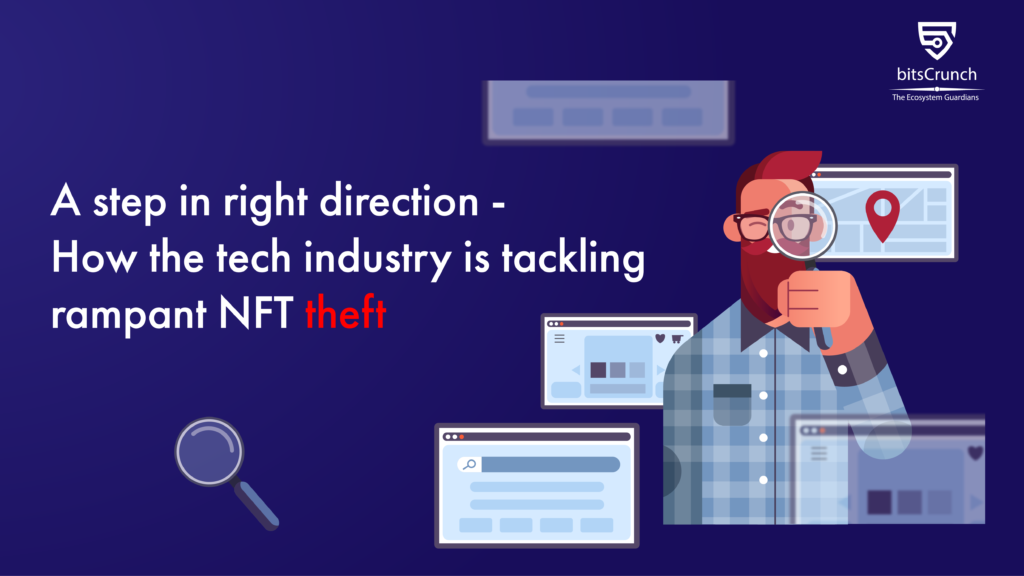With its many benefits, Non-Fungible Tokens have been a game-changer ever since the advent of the technology in 2014. From gaming to healthcare, almost every industry has at least one use case for NFTs. However, before all of this, NFTs revolutionized the art world by creating a new meaning for art ownership and revenue generation for artists.
This artist-focused technology has now gained enough popularity to be endorsed by several big names such as Coca-Cola, Mcdonald’s, Nike, Louis Vuitton, and Samsung, all the more exacerbating the recent hype. Over $2.5 billion worth of NFTs were sold in the first half of 2021. The number increased to $11 billion in Q4 2021 alone.
Through NFTs, more artists are able to monetize their artwork whose value is determined by the masses rather than a small percentage of experts in the industry. Digital art, which has so far only generated attention through tech platforms like Instagram and Facebook, has now become a crucial revenue source for artists, musicians, and other creators.
On the other hand, to say that the NFT industry remains foolproof from the wider issues of the art industry would be untrue. Like physical artworks, the non-fungible token industry is plagued with massive fraud and plagiarism that is economically frustrating the artists and NFT creators.
There is an overwhelming increase in cases where scammers post fraudulent listings on NFT marketplaces that feature stolen art as NFTs. Owing to the immutable nature of blockchain technology, flagging down such listings for copyright infringement becomes a colossal issue as they are never truly removed from the blockchain.
In February, NFT marketplace Cent temporarily suspended most of its transactions due to an overwhelming increase in fake and plagiarized tokens. The marketplace first gained prominence after it helped Jack Dorsey, co-founder and former CEO of Twitter, to sell an NFT of his first tweet for $2.9 million.
A rising number of digital creators, including popular artists Lois van Baarle and Aja Trier, have highlighted the growing cases of NFT theft and plagiarism on marketplaces. Van Baarle tweeted she has come across at least 132 instances of her work being stolen.
Popular marketplace OpenSea recently admitted that roughly 80% of NFT works on its platform are fake. The revelation came as the platform rolled back the ‘50 item limit’ on its free minting tool to combat counterfeit NFTs. The staggering data reflected an urgent need for more solutions to this counterfeit issue plaguing the entire industry.
“I think that Web3 holds a lot of promise and opportunity for creators,” Liat Gurwicz, CMO of DeviantArt, a well-known online art community, told The Verge. “But right now, unfortunately, Web3 is just not delivering on that promise. And instead of creators being able to enjoy the opportunity, they’re currently suffering from a lot of fraud and abuse and infringement of their work.”
Recognizing the issue, multiple companies, including bitsCrunch, have been racing to solve this stumbling block to NFT adoption by developing various solutions that detect fraudulent listings and combat art theft. DeviantArt recently extended its image detection software to artists outside the DeviantArt community as well.
Under most image detection tools present today, an artist can submit their artwork to a secure account, and the software will consistently scan and compare the NFT to the images uploaded on the public blockchains supported by the software. The artist will receive an alert as well as the option to take down the plagiarised images from the NFT marketplaces by filing a request.
While it’s impossible to remove an image code from a blockchain, the counterfeit NFTs are taken down from major NFT marketplaces like OpenSea. Since the majority of NFT purchases flow through these popular platforms, it becomes difficult for a fraudster to sell them as legitimate.
bitsCrunch has been a frontrunner in developing solutions for NFT security and analysis. Our product Crunch DaVinci is an AI-powered digital asset forgery system that flags copycats, forgeries, and bootlegged digital arts for artists. As pioneers of this emerging technology, we find it fulfilling that more industry participants are waking up to the need for more security in the Web3 space.
With big names recognizing the need for NFT security, it further propounds our mission to serve the Web3 community and safeguard the NFTs created by artists who pour their everything into creating a masterpiece.
The post A step in right direction – How the tech industry is tackling rampant NFT theft appeared first on bitsCrunch.
